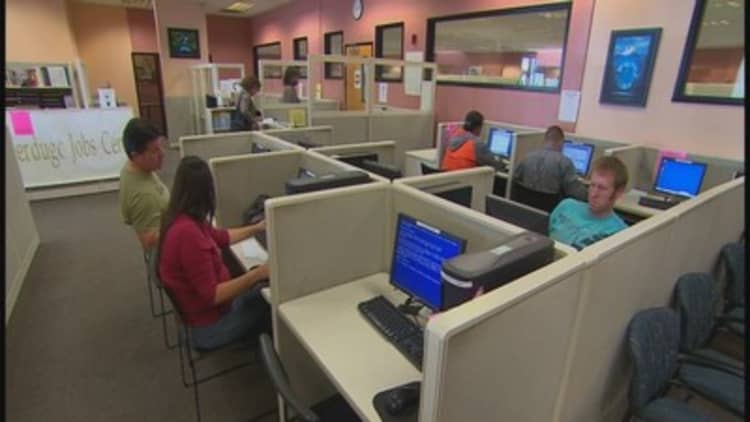
Job creation kept the pace in December, with the U.S. economy creating 252,000 jobs to close out the year, while the unemployment rate dropped to 5.6 percent.
The U.S. was expected to create 240,000 jobs in December, after adding an unexpectedly strong 353,000 jobs the prior month. The unemployment rate was seen falling to 5.7 percent from 5.8 percent a month earlier. An alternative measure that includes the underemployed and those who have stopped searching for employment also fell, moving from 11.4 percent to 11.2 percent, its lowest reading since October 2008.
After initially reacting positively to the report, markets changed direction with stocks opening in negative territory.
Businesses had been creating jobs at a monthly pace of 224,000, though wage growth remained modest and the drop in the headline rate had come in large part due to a decline in the labor force participation rate. Indeed, the participation rate continued to plummet, falling to a fresh 37-year low of 62.7 percent.
Job quality did not fare well either, with wages actually declining for the month by 5 cents an hour, pulling the annualized gain down to 1.7 percent. The average work week held steady at 34.6 hours. However, the amount of full-time workers surged by 427,000 while part-time positions dropped by 269,000.
Read MoreWhy the US will power the world economy in 2015
"It was generally a decent report," said Marie Schofield, chief economist at Columbia Investment Management. "The trends are strengthening."
Professional and business services led the way, with 52,000 new positions. Construction added 48,000, while bars and restaurants hired another 44,000 workers.
The holiday shopping season did nothing to help the retail trade, however, with the Labor Department reporting little change in payrolls after a jump in November.
Read MoreRetail turning a corner? The case for a 2015 boost
The total number of employed Americans increased by 111,000, while the actual size of the labor force declined by 273,000.
"Will this year be remembered as the time when Americans finally started to feel like the recovery was having a meaningful impact on their lives? On this front the December jobs report was disappointing," Joseph Lake, U.S. analyst for the Economist Intelligence Unit, said in a statement.
Schofield called the wage numbers "disconcerting" because the bulk of wage decreases came in nonsupervisory workers.
"Those are the cohorts, so to speak, that have the highest propensity to spend," she said. "If you can point to a burden in terms of lack of wages, it's been on the production workers."
In terms of Federal Reserve policy, there was some dispute over what the new numbers would mean.
The headline rate already had fallen below the central bank's target before it would start raising rates, but the lack of wage pressures means the Fed can still operate on its own timetable. Most market participants expect a rate hike by midyear, though some believe that the Fed could justify an earlier move.
Read More
The report was "all the more reason to expect that the Fed will start raising rates in the first half of 2015," Gad Levanon, macroeconomic and labor market research director for the Conference Board, said in a statement.
Paul Dales, senior U.S. economist at Capital Economics, said the report "leaves scope for the Fed to decide that the economy is improving by more than it expected, thereby triggering the first rate hike in March."
The December numbers closely mirrored private sector job creation projections earlier in the week from ADP and Moody's Analytics, with the firm projecting the number at 241,000.


